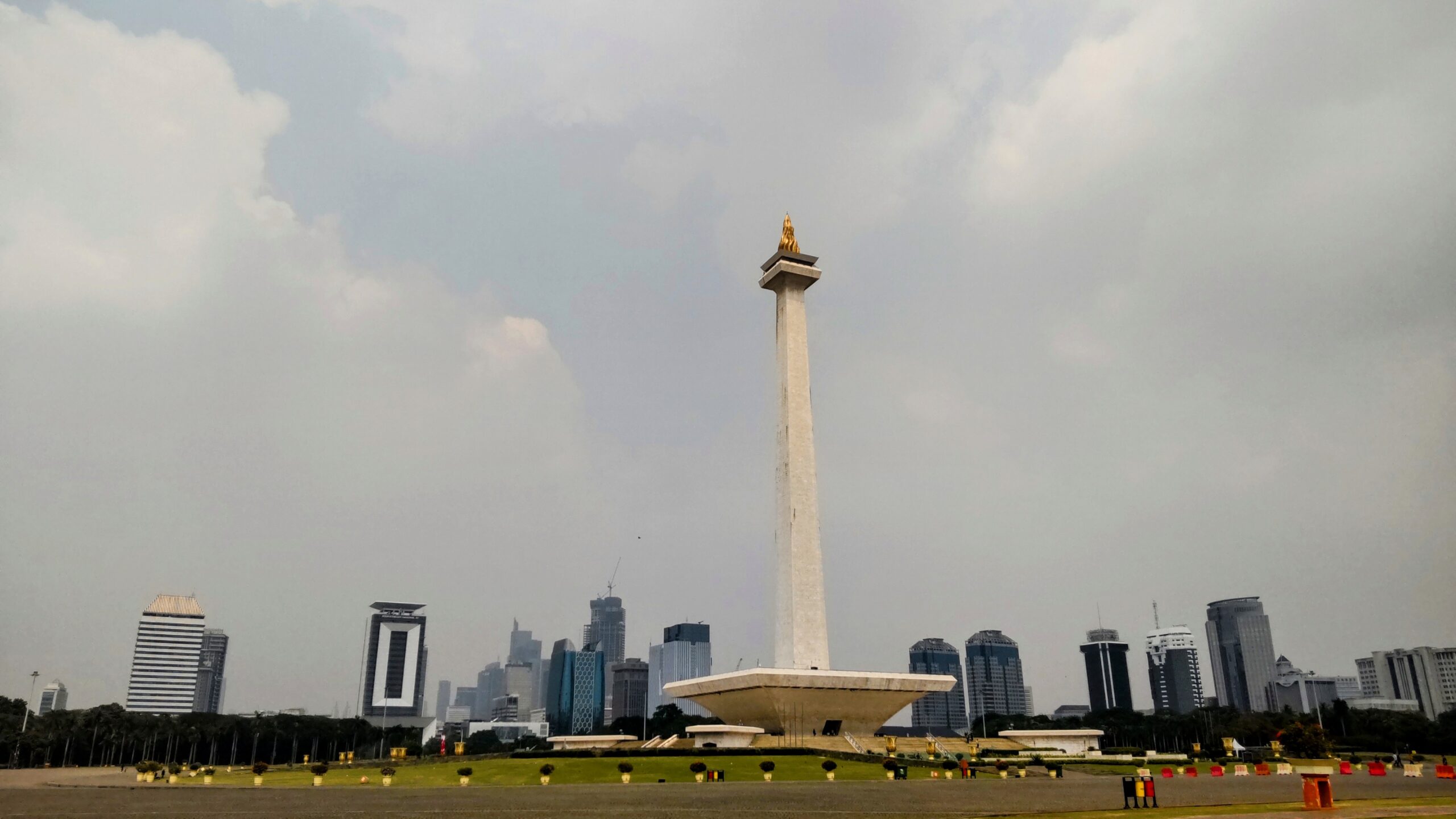At the heart of Jakarta, the capital of Indonesia, stands the National Monument, or Monas. During my first visit to Jakarta in June 2023, locals recommended it to me. In July 2024, I entered the underground museum, and in this article, I will share information about Monas and its admission procedures.
What is Monas? A Monument Embodying the Soul of Indonesia
Monas, soaring 132 meters high in Merdeka Square in the heart of Jakarta, is a beloved monument symbolizing Indonesia’s independence. Its white marble tower stands out from a distance, reigning as a landmark of Jakarta.
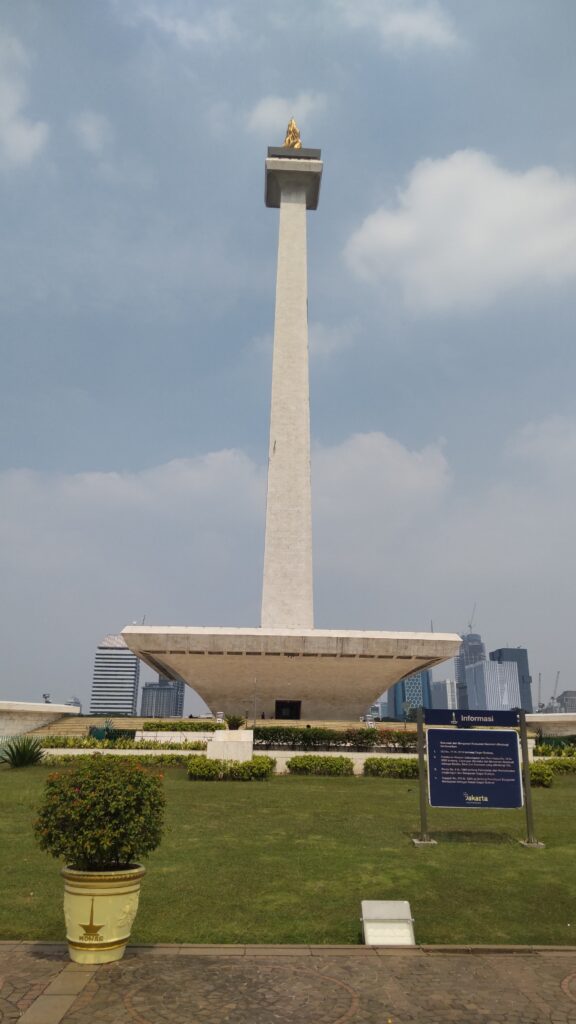
History and Birth of Monas
The construction of Monas was realized through the strong will of Indonesia’s first president, Sukarno. Sukarno desired to build a monument that would commemorate Indonesia’s independence and serve as a source of national pride. Commenced in 1961 and completed in 1975, Monas encapsulates Indonesia’s history and culture. At its pinnacle, a sculpture of a flame crafted from pure gold shines, symbolizing Indonesia’s independence and prosperity.
Meaning Symbolized by Monas
Monas is not merely a monument; it symbolizes the following for the Indonesian people:
- Symbol of Independence: Built to commemorate Indonesia’s independence, Monas is a source of national pride and embodies the spirit of independence.
- Symbol of Unity: In Indonesia, a country inhabited by diverse ethnic groups, Monas serves as a symbolic entity that unites the nation.
- Symbol of Development: Built with aspirations for Indonesia’s future development, Monas symbolizes the nation’s hope.
Monas Design
The design of Monas also carries significant meaning:
- Flame-shaped Top: Symbolizes the flame of Indonesian independence, representing the spirit of freedom that burns eternally.
- White Marble: Symbolizes purity and peace.
Inside Monas
Inside Monas, there is a historical museum and an observation deck, which keep visitors engaged.
- Historical Museum: Located underground, the historical museum allows you to learn about Indonesia’s history from ancient times to the present through dioramas and exhibits. The dioramas recreating scenes from the War of Independence are a must-see.
- Observation Deck: Taking the elevator up to the 110-meter high observation deck offers a panoramic view of Jakarta’s cityscape. On clear days, you can even see distant mountains.
How to Enter Monas
JakCard E-money Card Required!
Entrance
The entrance to Monas is a bit hard to find. It’s not at the base of the tower, but rather on the opposite side of the tower’s front, as shown in the photo above. From here, you go underground to buy tickets and then proceed through an underground passage to reach the tower.
After climbing a set of stairs, there are stairs on the left leading down to the underground. This is where the ticket booth is located.
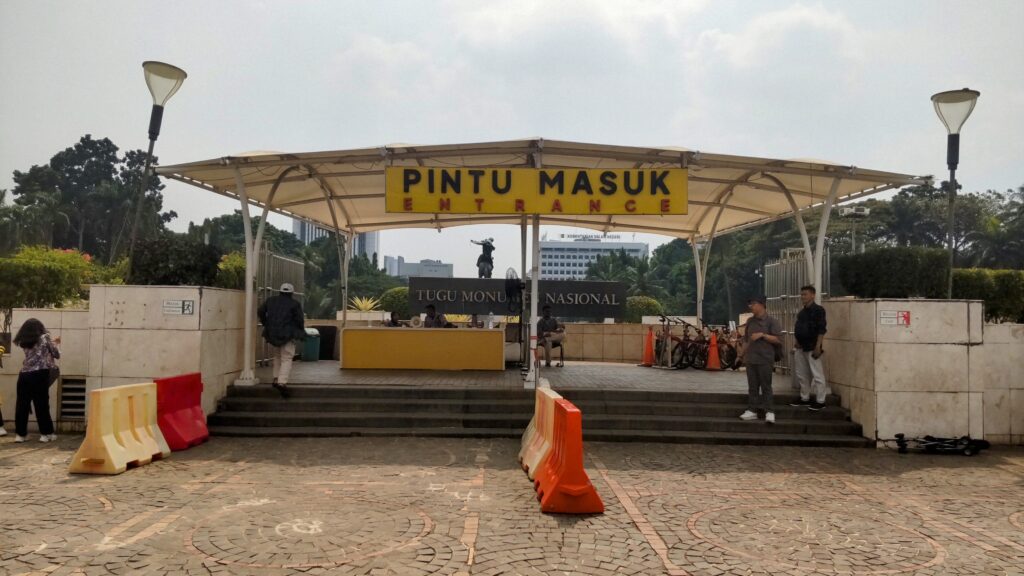
Ticket Booth and Admission Fees
The admission fees are displayed above the ticket booth. As of July 2024, it was 8,000 Rupiah (about 80 yen) for just the underground museum, and 24,000 Rupiah (about 240 yen) if you also wanted to go up to the observation deck. Children and students receive discounted rates (I couldn’t verify if Japanese student IDs are accepted).
Important: JakCard is Required!
What you need to be careful about is that you cannot enter with cash for this amount. Payment is only accepted via “JakCard,” an e-money card issued by Bank DKI. The first time I tried to enter, I offered 8,000 Rupiah for the museum, but was told it was 50,000 Rupiah. At the time, I didn’t understand and gave up on entering. However, upon researching later, I found that the fee is paid from the balance charged on the JakCard, and if you don’t have the card, you need 50,000 Rupiah at the counter, which includes the purchase of a new card. Of course, this card can then be used as an e-money card, and the balance can be used for transportation and shopping. I already possessed a JakCard for bus rides, so I charged it before coming.
What I don’t quite understand is why Bank DKI, which issues the JakCard, has a monopoly on the admission operations for Monas, a national facility. The receipt I received at the counter had the Bank DKI logo printed on it. What about people who use other e-money cards? Do they have to buy a JakCard just for this purpose?
Once payment is complete, you don’t receive a physical ticket; your JakCard is returned to you. Proceed through the underground passage to a gate resembling a train station turnstile, where you tap your JakCard to enter.
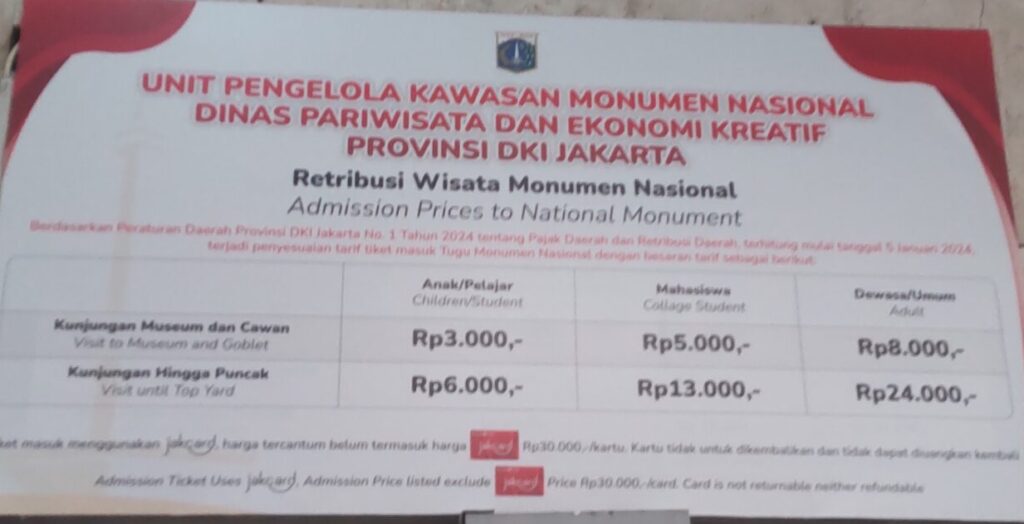
The Underground Museum: Indonesia’s History and Independence Materials
After passing through the underground gate, you emerge briefly above ground, directly beneath the tower. From there, you descend into the underground museum.
The museum features extensive exhibits along the walls of a large exhibition hall, showcasing Indonesia’s history from prehistoric times using dioramas and figures. The history is displayed in sections, covering the establishment of ancient kingdoms, the Dutch colonial period and resistance, the Japanese occupation during the Greater East Asia War, the post-war War of Independence and the establishment of the state, and subsequent developments like elections and parliament. Explanations are provided in Indonesian and English. Mobile phone signals didn’t reach underground, so I couldn’t use the camera function of a translation app. I inferred most of the information by looking at the English text.
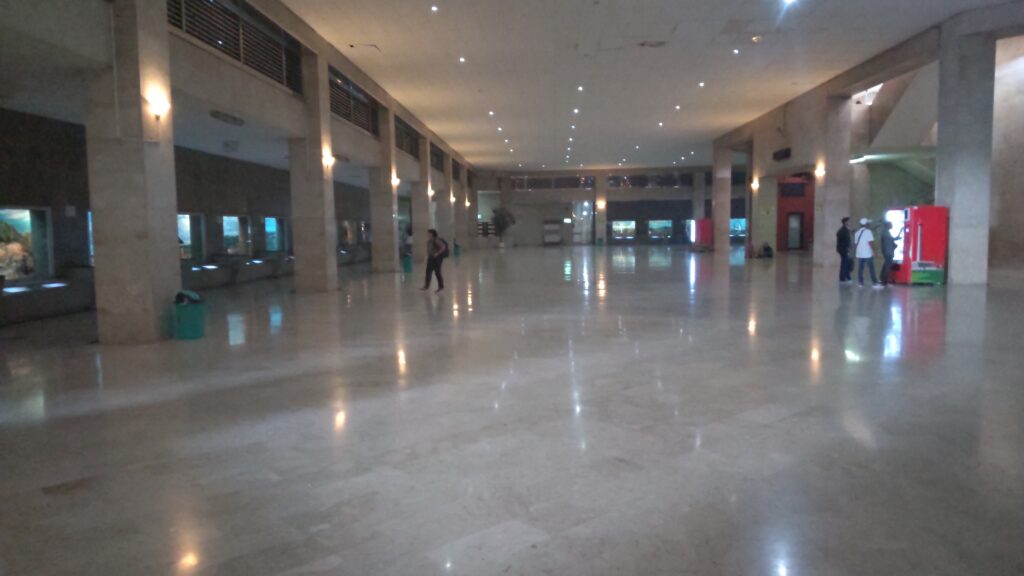
This diorama depicts the scene of the first president, Sukarno (incidentally, he was Mrs. Dewi Sukarno’s husband), declaring independence on August 17, 1945 (just two days after Japan’s defeat). I learned for the first time from this exhibition that there were significant conflicts among Islam, the military, and the Communist Party even after independence.
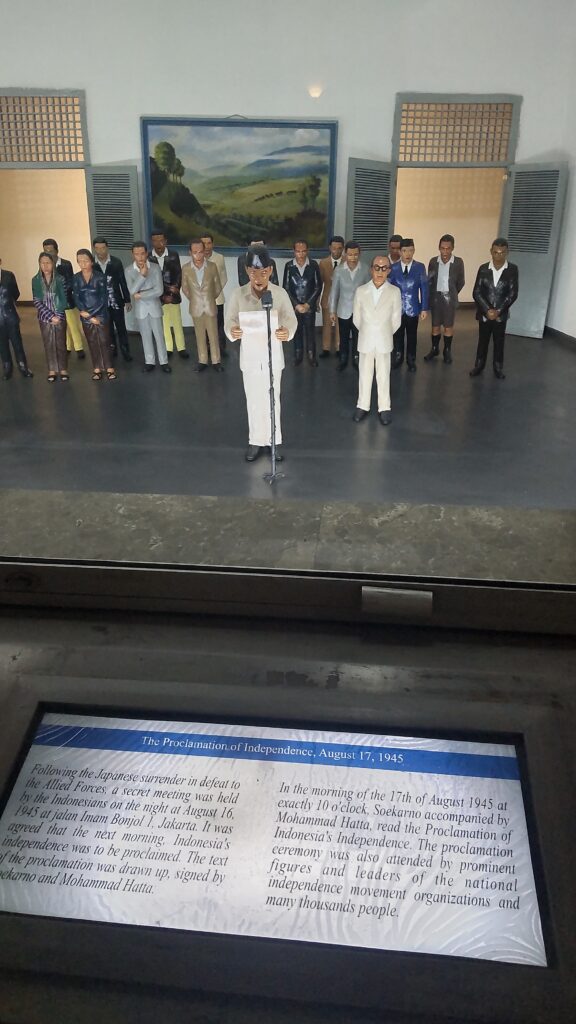
Additionally, the exhibition prominently highlighted how the Asian-African Conference (also known as the Bandung Conference), held in Bandung in 1955, led to the coining of terms like “Third World” and “Non-Aligned Movement” that were not aligned with the Cold War structure.
After completing a tour of the exhibition hall, the exhibits end. You ascend the stairs to emerge above ground. This is the exit. Those visiting only the museum exit directly, while those going up to the tower’s observation deck enter through the entrance at the base of the tower from there.
Important Notes When Visiting Monas
- Dress Code: Monas is considered a sacred place, so avoid overly revealing clothing.
- Belongings: Bring necessary items such as a camera and drinks.
- Crowd Status: It can get particularly crowded on holidays and weekends, so it’s recommended to visit with plenty of time.
Finally
Monas is an important place that symbolizes Indonesia’s history and culture. When visiting Jakarta, be sure to stop by Monas and experience the soul of Indonesia. At that time, it would be helpful if you could learn at least a rough overview of Indonesian history beforehand.

